6 AI In Sports Use Cases Using Computer Vision

The world of sports is constantly evolving, and artificial intelligence (AI) has emerged as a game-changer in the industry. AI, in combination with data annotation, has opened up a world of possibilities in sports, transforming the way coaches, athletes, journalists, and fans experience the games they love.
In this blog, we'll explore some of the most exciting applications of data annotation in AI for sports, highlighting how it is revolutionizing not only the game on the field but also the entire sports ecosystem, from training sessions to fan engagement. Join us on this journey through the exciting world where AI and sports meet to enhance the way we play, watch, and celebrate our favourite games.
Table of Contents
- Crucial Roles of Data Annotation in Sports Analytics
- What Is the Power of Data Annotation in Sports
- LabelGPT For Faster Data Annotation in Sports
- Conclusion
- Frequently Asked Questions
Crucial Roles of Data Annotation in Sports Analytics
1. Player Performance Improvement
AI-powered applications are now helping athletes enhance their performance. One standout example is HomeCourt, which combines computer vision and machine learning to evaluate basketball players' skills.
By tracking various performance indicators, athletes can identify their strengths and weaknesses, enabling them to focus on areas that need improvement. Data annotation plays a crucial role in collecting and analyzing this data, ensuring its accuracy and reliability.
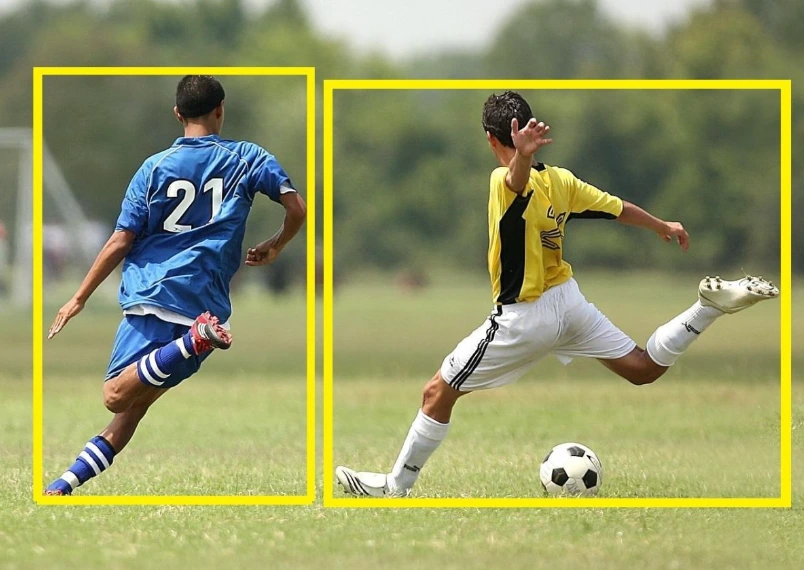
Coaches are benefiting from AI's data-driven insights. Wearable sensors and high-speed cameras are used to measure player movements and actions during games. AI platforms analyze this data, providing coaches with valuable information for strategic decisions and player development. Data annotation is essential in processing this massive amount of information, enabling coaches to fine-tune training programs based on quantitative and qualitative variables.
Sports journalism is undergoing a transformation thanks to AI and Natural Language Processing (NLP). Automated journalism is gaining ground, with AI-powered software, processing sports data to generate summaries of major sporting events. Data annotation ensures the accuracy of information fed into these systems, allowing for the creation of engaging and informative sports content in real-time.

4. Virtual Reality for Sports
Virtual reality (VR) is taking sports and gamification to new heights. AI-driven virtual platforms provide users with a realistic experience, allowing them to compete digitally with others worldwide using VR headsets. The combination of AI and VR creates an immersive environment akin to watching live games. With the advent of 5G, these experiences are becoming even more interactive, reshaping the sports industry.
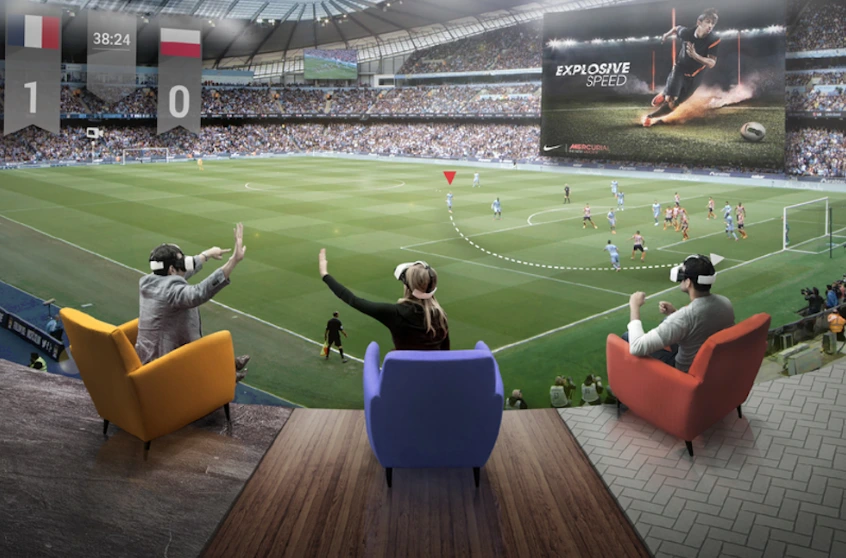
5. Broadcasting and Streaming
AI algorithms are enhancing the way fans experience sports. They select the best camera angles for viewers, offer live event subtitles in multiple languages, and enable broadcasters to capitalize on advertising opportunities. Data annotation ensures that the AI algorithms can accurately identify players, ball movement, and other crucial elements, delivering a seamless viewing experience to fans.
6. AI in Match Predictions
Machine learning is being employed to predict match outcomes in sports with vast datasets. For example, in cricket or soccer, predictive models can be developed to anticipate upcoming matches' results. This application of AI helps fans, bettors, and analysts make informed predictions, adding an extra layer of excitement to the games. Data annotation contributes by organizing and preparing these datasets for machine learning models.
What Is the Power of Data Annotation in Sports
Data annotation plays a critical role in implementing AI in sports. It involves tasks such as image and video annotation, player tracking using bounding boxes, key point annotation for action identification, semantic segmentation for player separation, and annotation validation to ensure data accuracy.
These annotations are the foundation on which AI models are built, providing the necessary information to make informed decisions and insights.
1.Player Tracking Using Bounding Boxes
Player tracking using bounding boxes is a fundamental data annotation technique in the realm of AI for sports. It involves annotating players in images or video footage by drawing bounding boxes around them.
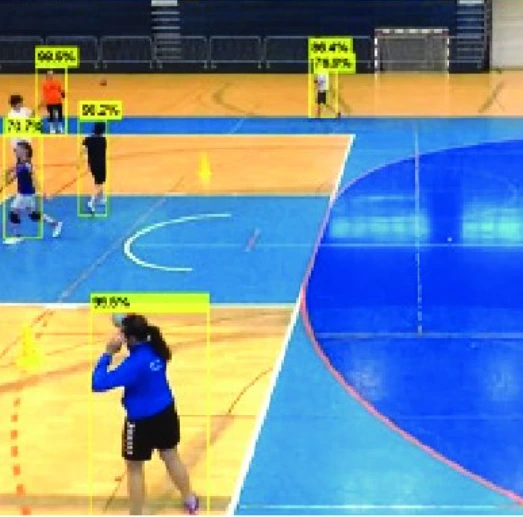
Here's why this technique is essential:
- Real-Time Tracking: Bounding box annotations enable real-time tracking of players during sports events. This tracking provides coaches, analysts, and AI systems with continuous data on player positions and movements.
- Performance Analysis: By accurately annotating players with bounding boxes, AI systems can analyze player movements, positions, and interactions. This data is crucial for assessing player performance, tactics, and strategies.
- Enhanced Tactical Insights: Coaches can gain valuable insights into team formations, player positioning, and movement patterns. This information helps in developing game strategies and making in-game adjustments.
- Data Consistency: Bounding box annotations ensure consistency in tracking players across frames and footage. This consistency is vital for creating reliable datasets for AI model training.
- Multi-Sport Applications: Player tracking using bounding boxes is applicable across various sports, including basketball, football, volleyball, and more. It provides a versatile solution for analyzing player behavior in different contexts.
- Data for AI Models: Annotated bounding boxes serve as the foundation for AI models that perform tasks such as player tracking, pose estimation, and behavior analysis. These models play a significant role in advancing sports analytics.
2. Key Point Annotation
Key point annotation involves identifying and annotating specific key points or landmarks on athletes' bodies. These key points can be used for action identification, posture analysis, and movement tracking. In sports, this annotation technique is invaluable for understanding player movements and improving performance. For example:
- Action Identification: Key points on an athlete's body can be used to track their movements during a game. This data can help coaches and analysts understand how players perform specific actions such as shooting a basketball, swinging a golf club, or executing a gymnastics routine.
- Posture Analysis: Key points annotation allows for the analysis of an athlete's posture and body position during different phases of a game. This information is vital for correcting posture-related issues and preventing injuries.
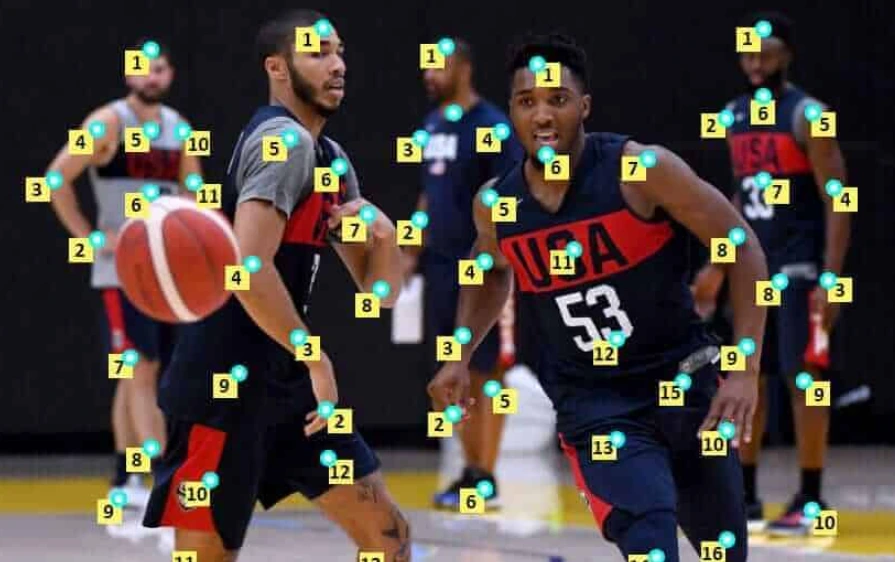
- Biomechanical Analysis: By annotating key points on an athlete's body, AI systems can provide insights into biomechanical aspects, such as joint angles and range of motion. This information aids in optimizing techniques and reducing the risk of injuries.
3. Semantic Segmentation
Semantic segmentation involves annotating specific objects or regions within an image or video. In sports, semantic segmentation is used to separate players, the playing field, the ball, and other elements within the footage. Here's why it's essential:
- Player Separation: Semantic segmentation helps distinguish individual players from the background, making it easier to track their movements and interactions during a game. This information is invaluable for player performance analysis and tactical planning.
- Ball Tracking: By segmenting the ball from the rest of the scene, AI systems can accurately track its trajectory and speed. This data is crucial for analyzing ball movement and player reactions.
- Field Recognition: Semantic segmentation allows AI to recognize and annotate the playing field's boundaries and features. This information aids in understanding players' positions on the field and their proximity to specific landmarks.
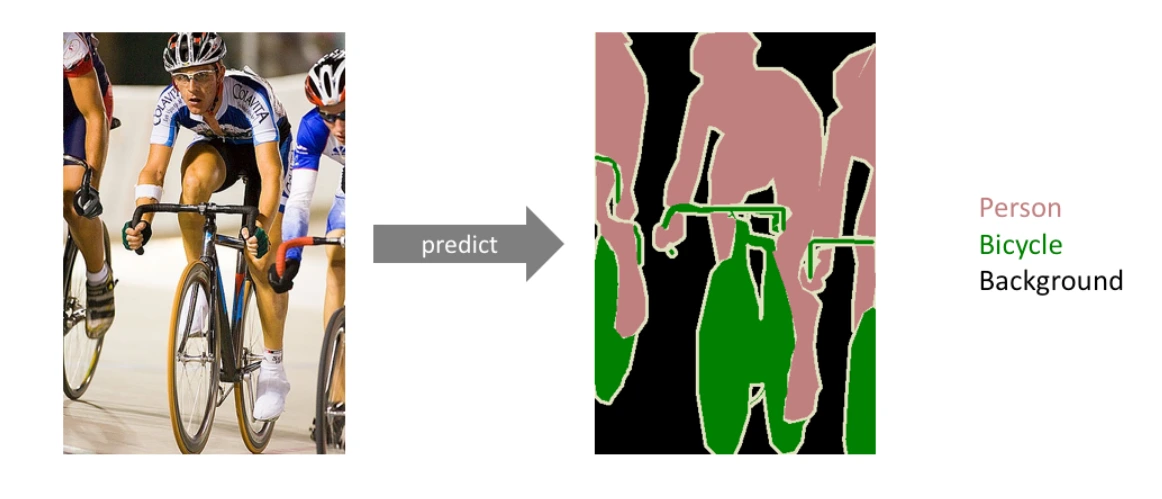
4. Annotation Validation
Annotation validation is a crucial step in the data annotation process. After annotating data, it's essential to validate the annotations to ensure their accuracy and consistency. Here's why annotation validation is vital:
- Data Quality Assurance: Validation helps identify and correct any anomalies or errors in the annotated data. This ensures that the AI models trained on this data will produce reliable results.
- Model Training Improvement: Validated annotations contribute to better model training. Inaccurate or inconsistent annotations can lead to suboptimal model performance and unreliable insights.
- Enhanced Decision-Making: Validated data gives coaches, analysts, and AI systems confidence in the accuracy of the information used for strategic decisions, performance analysis, and other applications.
Key point annotation, semantic segmentation, and annotation validation are integral parts of data annotation in AI for sports. These techniques help improve player performance analysis, action identification, posture analysis, biomechanical insights, player tracking, ball tracking, field recognition, and overall data quality, leading to more accurate and valuable AI-driven insights in the world of sports.
LabelGPT For Faster Data Annotation in Sports
In the rapidly evolving world of AI applications in sports, we are excited to introduce LabelGPT, a groundbreaking prompt-based labeling tool that has the potential to transform data annotation for sports-related use cases.
While LabelGPT was initially designed for broader applications, its capabilities can be harnessed effectively in the realm of sports analytics. Let's see how-
Import Sports Data: Connect your sports-related images and videos from various sources, including game footage, player highlights, and match recordings, to the LabelGPT platform.
Specify Labeling Requirements: Provide text prompts that specify the objects or elements within the sports content that require labeling. You can choose from various labeling types, such as player tracking bounding boxes, action recognition, or even stadium segmentation.
Effortless Review: In a matter of minutes, LabelGPT will generate labeled sports content and provide confidence scores. These scores ensure the accuracy and reliability of the annotations. You can easily review and validate the labels.
Benefits of LabelGPT in Sports Analytics
Eliminate Manual Labeling:LabelGPT's labelling engine, powered by foundation models, can automatically detect and label sports-related objects and actions based on simple prompts. This eliminates the need for time-consuming manual annotation.
Rapid Labelling: Say goodbye to the painstaking task of labelling sports content frame by frame. LabelGPT can label multiple elements within sports footage with a single prompt, dramatically reducing the time required for data annotation.
Enhanced Accuracy: LabelGPT provides confidence scores, ensuring that the annotations meet high-quality standards. This accuracy is vital for the success of machine learning models in sports analytics.
LabelGPT in Sports Analytics
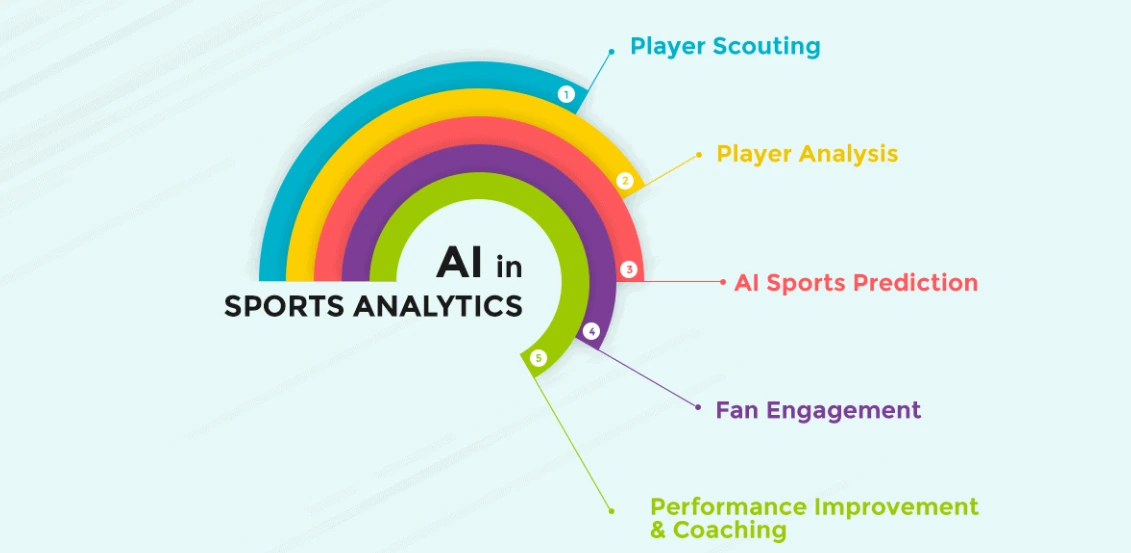
Player Tracking: LabelGPT can automatically annotate player positions using bounding boxes in sports videos. This is invaluable for tracking player movements, game analysis, and tactical insights.
Action Recognition: It can recognize and label specific actions within sports content, such as goal scoring in soccer, slam dunks in basketball, or wickets in cricket. This aids in automating the process of action identification.
Stadium and Field Segmentation: LabelGPT can segment stadiums or playing fields, distinguishing them from the surrounding environment. This is useful for understanding the spatial dynamics of sports events.
Conclusion
In the world of sports, the marriage of AI and data annotation is proving to be a game-changer. From enhancing player performance and coaching strategies to revolutionizing sports journalism and fan experiences, AI is transforming the industry on multiple fronts.
With the power of data annotation behind AI, we can expect even more exciting developments in the future. As sports data analytics continue to grow, AI will undoubtedly play a pivotal role in shaping the future of sports.
Frequently Asked Questions
- How can AI help with data annotation?
A rising trend in numerous data annotation tools is the incorporation of automation, often referred to as auto-labeling. Through the power of AI, these tools can aid human annotators in enhancing their annotations, such as automatically transforming a four-point bounding box into a polygon, or in some cases, even autonomously annotating your data without requiring human intervention.
2. How will data & analytics impact the sports industry?
As the adoption of data and analytics in sports continues to evolve, the sports industry will inevitably need to confront not only the technical aspects but also a growing array of challenges related to data rights management, privacy, regulatory compliance, monetization strategies, and novel approaches to enhancing the sports fan experience.
3. Can AI transform sports data?
This holds true for nearly every industry that has been revolutionized by AI. Essentially, AI serves as a means to replicate and incorporate fundamental human capabilities into everyday tasks, encompassing the capacity to perceive, analyze, and execute actions. And, as with any AI endeavor, it commences with the availability of high-quality sports.

Simplify Your Data Annotation Workflow With Proven Strategies
Download the Free Guide

